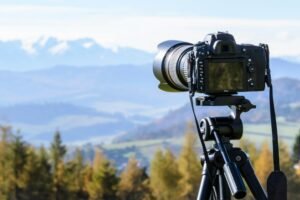Comprehensive Guide of Kayaking
Overview
Kayaking is an exciting water sport that involves paddling a small, narrow watercraft known as a kayak. This hobby allows individuals to explore rivers, lakes, and oceans while enjoying the beauty of nature and engaging in physical activity. Kayaking can be done solo or in tandem, and there are various types of kayaks designed for different environments, including recreational, touring, and whitewater kayaks. The activity promotes fitness, as it engages multiple muscle groups and improves cardiovascular health. Additionally, kayaking can be a peaceful and meditative experience, providing a unique way to connect with the outdoors and unwind from daily stressors.
History
The history of kayaking dates back thousands of years to the indigenous peoples of the Arctic regions, who used kayaks for hunting and transportation. The word ‘kayak’ originates from the Greenlandic word ‘qajaq,’ which refers to the traditional skin-covered boats used by the Inuit. These early kayaks were crafted from wood and animal skins, designed to navigate icy waters and hunt marine animals. Over time, kayaking evolved into a recreational activity, gaining popularity in the 20th century as materials like fiberglass and plastic became available. The sport has since diversified into various disciplines, including sea kayaking, whitewater kayaking, and kayak fishing, each offering unique challenges and experiences.
Popularity and Demographics
Kayaking has become increasingly popular worldwide, appealing to a diverse range of individuals. According to the Outdoor Foundation’s participation report, approximately 10 million Americans engage in kayaking annually, with a growing interest among younger generations. The sport attracts both men and women, with many organizations and clubs promoting inclusivity and accessibility. Kayaking is particularly popular in coastal regions and areas with abundant waterways, where enthusiasts can easily access suitable locations. The rise of social media has also contributed to kayaking’s popularity, as individuals share their adventures and experiences, inspiring others to take up the hobby. Additionally, the availability of rental services and guided tours has made kayaking more accessible to beginners, further expanding its demographic reach.
Sponsored Hobbyists and Vendors
Become a Sponsor!
Affiliate Disclaimer: Throughout some sections below, Hobby Spotlight may suggest some tools, equipment or material using affiliate links. By purchasing any of those items, Hobby Spotlight may earn a small commission. This helps fund our website, content and services without directly charging our users.
Getting Started
Essential Kayaking Gear:
Beginner
- Kayak: A stable and easy-to-use kayak for beginners.
- Paddle: Lightweight paddle suitable for beginners.
- Personal Flotation Device (PFD): Essential safety gear for kayaking.
- Dry Bag: Waterproof bag to keep belongings dry.
- Whistle: Safety whistle for emergency signaling.
Intermediate
- Touring Kayak: Longer kayak designed for longer trips.
- Adjustable Paddle: Paddle with adjustable length for comfort.
- Kayak Seat: Comfortable seat for extended kayaking sessions.
- Spray Skirt: Keeps water out of the kayak while paddling.
- Kayak Cart: Wheeled cart for easy transport of the kayak.
Basic Requirements and Initial Setup:
- Kayak: Choose between a sit-on-top or a sit-inside kayak based on your comfort and the type of water you plan to navigate. Ensure it is suitable for your skill level and intended use.
- Paddle: Select a paddle that matches your height and the width of your kayak. A lightweight, durable paddle will enhance your paddling efficiency and comfort.
- Personal Flotation Device (PFD): A properly fitting PFD is essential for safety. It should be comfortable and allow for freedom of movement while ensuring buoyancy.
Fundamental Skills to Learn:
- Paddling Techniques: Mastering forward strokes, reverse strokes, and turning techniques is crucial for effective navigation.
- Balance and Stability: Learning to maintain balance in the kayak, especially in rough waters, is essential for safety and control.
- Rescue Techniques: Familiarize yourself with self-rescue and assisted rescue methods in case of capsizing.
- Navigation Skills: Understanding how to read maps, use a compass, and recognize landmarks will enhance your kayaking experience.
- Weather Awareness: Being able to assess weather conditions and understand their impact on water safety is vital for planning your trips.
Sub-Hobby/Common Activities:
- Whitewater Kayaking: Involves navigating through fast-moving rivers and rapids, requiring advanced skills and safety measures.
- Sea Kayaking: Focuses on paddling in ocean waters, often involving longer distances and exposure to waves and tides.
- Kayak Fishing: Combines fishing with kayaking, requiring specialized gear and techniques for a successful outing.
- Kayak Touring: Involves longer trips on calm waters, often exploring scenic routes and camping along the way.
- Kayak Racing: Competitive paddling that emphasizes speed and technique, often held in organized events.
Terminology:
- Bow: The front part of the kayak.
- Stern: The back part of the kayak.
- Hull: The body of the kayak that sits in the water, affecting stability and speed.
- Chine: The edge where the hull meets the sides of the kayak, influencing handling and stability.
- Deck: The top surface of the kayak, often equipped with storage hatches and rigging.
- Rudder: A steering device located at the stern, used to help control direction.
- Skeg: A fixed fin on the hull that helps with tracking and stability in windy conditions.
- Port: The left side of the kayak when facing forward.
- Starboard: The right side of the kayak when facing forward.
- Edging: The technique of tilting the kayak to improve turning and stability.
Advanced Topics and Specializations
Advanced Tools and Equipment:
- High-Performance Kayak Paddle: Lightweight and durable paddle designed for efficiency and speed in various water conditions.
- GPS Fish Finder: Advanced device that provides real-time location tracking and underwater mapping for improved navigation and fishing.
- Dry Suit for Kayaking: Specialized waterproof suit that provides insulation and protection from cold water, ensuring safety during extended trips.
- Kayak Stabilizer System: Equipment that enhances stability and balance for beginners or those engaging in fishing or photography while kayaking.
- Portable Kayak Repair Kit: Comprehensive kit containing tools and materials for on-the-go repairs to ensure safety and functionality.
Advanced Projects and Achievements:
- Long-Distance Kayaking Expedition: Completing a multi-day kayaking journey across challenging waters, showcasing endurance and navigation skills.
- Kayak Building: Constructing a custom kayak from scratch using wood or composite materials, demonstrating craftsmanship and design knowledge.
- Competitive Racing: Participating in local or national kayak races, achieving personal bests and earning medals in various categories.
Advanced Techniques and Methods:
- Rolling Techniques: Mastering various types of rolls, such as the Eskimo roll, to recover from capsizing and maintain stability in rough waters.
- Navigation Skills: Utilizing maps, compasses, and GPS devices to plan and execute safe routes in unfamiliar waters.
- Rescue Techniques: Learning advanced rescue methods, including T-rescues and self-rescues, to ensure safety in emergency situations.
Specializations and Niche Areas:
- Whitewater Kayaking: Focusing on navigating fast-moving rivers and rapids, requiring specialized skills and equipment.
- Sea Kayaking: Exploring coastal waters and open seas, emphasizing long-distance paddling and navigation in tidal conditions.
- Kayak Fishing: Combining fishing with kayaking, utilizing specialized gear and techniques to catch fish from a kayak.
- Expedition Kayaking: Engaging in multi-day trips that involve camping and navigating remote waterways.
- Adaptive Kayaking: Providing opportunities for individuals with disabilities to participate in kayaking through specialized equipment and techniques.
Future Trends and Innovations:
- Increased focus on eco-friendly materials and sustainable practices in kayak manufacturing.
- Growth of community-based kayaking programs promoting inclusivity and accessibility.
- Advancements in kayak design, including lighter materials and improved stability features.
- Integration of smart technology in kayaks for enhanced navigation and safety features.
- Emergence of virtual reality training programs for skill development and safety education.
Technology Integrations:
- GPS Navigation Systems: Devices that provide real-time location tracking and route planning for kayakers.
- Wearable Safety Devices: Smartwatches and personal locator beacons that enhance safety and communication on the water.
- Online Community Platforms: Websites and apps that connect kayakers for sharing tips, organizing events, and finding local paddling spots.
- Drone Technology: Using drones for aerial photography and monitoring conditions in remote kayaking locations.
- Mobile Apps for Kayaking: Applications that offer weather updates, tide charts, and local paddling conditions to enhance planning and safety.
Further Learning and Resources
Books:
- The Complete Idiot’s Guide to Kayaking by John McGowan: This book provides a straightforward introduction to kayaking, including essential skills, safety protocols, and advice on choosing the right kayak.
- Sea Kayaking: A Manual for Long-Distance Touring by John Dowd: This comprehensive manual is designed for experienced paddlers looking to undertake long-distance sea kayaking trips, covering advanced skills and planning.
- The Complete Sea Kayaker’s Handbook by Shelley Johnson: A thorough guide for advanced kayakers that delves into advanced paddling techniques, safety, and navigation for challenging sea conditions.
Websites:
- Paddling.com, https://www.paddling.com – A comprehensive resource for kayakers, featuring articles, gear reviews, and a community forum.
- American Canoe Association, https://www.americancanoe.org – Offers safety information, training resources, and advocacy for paddlesports.
- Kayak Session Magazine, https://www.kayaksession.com – A digital magazine dedicated to kayaking, featuring news, gear reviews, and adventure stories.
- REI Co-op Journal, https://www.rei.com/blog/paddling – Provides expert advice, tips, and inspiration for kayaking enthusiasts.
- Kayaking.org, https://www.kayaking.org – A platform for finding kayaking locations, events, and community connections.
Courses:
- Kayaking Basics by REI, https://www.rei.com/learn/course/101/kayaking-basics – A beginner-friendly course covering essential kayaking skills and safety.
- Introduction to Kayaking by Udemy, https://www.udemy.com/course/introduction-to-kayaking/ – An online course designed for beginners to learn the fundamentals of kayaking.
- Advanced Kayaking Techniques by Paddling.com, https://www.paddling.com/learn/advanced-kayaking-techniques – Focuses on advanced skills for experienced kayakers looking to enhance their abilities.
- Kayak Safety and Rescue Techniques by American Canoe Association, https://www.americancanoe.org/page/RescueCourses – A course aimed at teaching essential safety and rescue skills for kayakers.
- Kayaking for Fitness by Skillshare, https://www.skillshare.com/classes/Kayaking-for-Fitness/123456 – A course that combines kayaking techniques with fitness training for a healthier lifestyle.
Content Creators and Community
Content Creators:
- Kayaking with Jim (YouTube): Offers engaging tutorials and adventure vlogs, showcasing various kayaking techniques and beautiful locations around the world.
- Paddle TV (YouTube): Focuses on gear reviews, paddling tips, and kayaking adventures, providing valuable insights for both beginners and experienced paddlers.
- Kayak Guide (Instagram): Shares stunning photography and tips on kayaking destinations, gear, and safety, inspiring followers to explore the waterways.
- Kayaking Community (Facebook): A vibrant group where enthusiasts share experiences, advice, and photos from their kayaking adventures.
Online Forums and Social Media Groups:
- Reddit – /r/Kayaking: A community for sharing tips, experiences, and advice on all things kayaking.
- Facebook Kayaking Groups: Various groups dedicated to kayaking enthusiasts, offering a platform for sharing experiences and advice.
- Paddle Forums: An online forum where paddlers discuss techniques, gear, and trip planning.
- Instagram Hashtags (#kayaking, #paddlelife): Follow these hashtags for inspiration, tips, and community engagement.
- Pinterest Boards: Explore boards dedicated to kayaking tips, gear recommendations, and scenic locations.
Local Clubs and Organizations:
- Local Kayaking Clubs: Many communities have clubs that organize group paddles, training sessions, and social events.
- Canoe and Kayak Associations: National and regional organizations that promote kayaking through events, education, and advocacy.
- Outdoor Recreation Centers: Often host kayaking classes and events for all skill levels.
- Meetup Groups: Platforms like Meetup.com feature local kayaking groups for social paddling and skill development.
- Adventure Sports Organizations: Groups that offer kayaking trips, workshops, and community outreach programs.
Events, Meetups, and Conventions:
- World Kayak Festival: An annual event celebrating kayaking with competitions, workshops, and community activities.
- Local Kayaking Competitions: Regional events that encourage skill development and camaraderie among paddlers.
- Outdoor Adventure Expos: Many expos feature kayaking demos, gear showcases, and educational sessions.
- Kayaking Workshops: Organized by local clubs or outdoor centers, these workshops focus on skills, safety, and technique.
- Kayak Fishing Tournaments: Events that combine kayaking and fishing, promoting both sports in a fun and competitive environment.
Associated Hobbies
- Canoeing: Similar to kayaking, canoeing involves paddling a small boat, but typically features an open design. It allows for a different experience on the water, often focusing on leisurely exploration and family outings.
- Stand-Up Paddleboarding (SUP): This water sport combines elements of surfing and kayaking, where participants stand on a large board and use a paddle to navigate. It offers a full-body workout and a unique perspective of the water.
- Fishing: Many kayakers enjoy fishing from their kayaks, as it allows them to access remote fishing spots that are difficult to reach by land or larger boats. This combination enhances the outdoor experience.
- Wildlife Watching: Kayaking provides an excellent opportunity to observe wildlife in their natural habitats. Paddlers often encounter birds, fish, and other animals, making it a rewarding experience for nature enthusiasts.
- Camping: Kayaking can be combined with camping trips, allowing enthusiasts to explore waterways and set up camp along the shore. This adventure offers a unique way to experience nature and enjoy the outdoors.
- Photography: Many kayakers take up photography to capture the stunning landscapes and wildlife they encounter on their journeys. This hobby allows them to document their adventures and share their experiences with others.
- Fitness and Exercise: Kayaking is a great way to stay active and improve physical fitness. It engages various muscle groups and provides cardiovascular benefits, making it an enjoyable workout.
- Environmental Conservation: Many kayakers become advocates for protecting waterways and ecosystems. They may participate in clean-up events or support organizations focused on preserving natural habitats.
Cost and Budgeting
Initial Investment and Ongoing Costs:
- Initial Investment: The cost to start kayaking can vary significantly based on the type of kayak and equipment you choose. A basic recreational kayak can range from $300 to $800, while more specialized kayaks, such as touring or fishing kayaks, can cost between $800 and $2,500. Additionally, you’ll need to invest in essential gear like a paddle ($50-$300), a personal flotation device (PFD) ($50-$150), and safety equipment, which can add another $100-$200 to your initial costs.
- Ongoing Costs: Ongoing costs include maintenance for your kayak, which may involve occasional repairs or replacements of parts like paddles and PFDs. If you plan to kayak frequently, consider costs for storage, transportation (like a roof rack), and any fees for launching at certain locations. Additionally, if you participate in guided tours or classes, those can add to your expenses.
Budget-Friendly Options:
- Renting Equipment: If you’re new to kayaking, consider renting a kayak and gear from local outfitters. This allows you to try different types of kayaks without a significant upfront investment.
- Used Kayaks: Look for second-hand kayaks on platforms like Craigslist, Facebook Marketplace, or local outdoor gear swap events. You can often find quality kayaks at a fraction of the retail price.
- DIY Gear: For those who are handy, consider making your own kayak accessories, such as storage solutions or safety gear, which can save money while personalizing your setup.
Where to Buy:
- Local Outdoor Stores: Many local outdoor retailers specialize in kayaking gear and can provide expert advice on the best options for your needs.
- Specialty Kayak Shops: These shops often have a wide selection of kayaks and accessories, along with knowledgeable staff who can help you choose the right equipment.
- Online Retailers: Websites like REI, Amazon, and Backcountry offer a vast selection of kayaks and gear, often with customer reviews to help guide your purchase. Be sure to check shipping options and return policies.
Money Making
How to Turn the Hobby into a Profession or Side Hustle:
- Kayak Tour Guide: Become a certified kayak tour guide, leading groups through scenic waterways. This role involves sharing your knowledge of local ecosystems, safety practices, and kayaking techniques while providing an enjoyable experience for participants.
- Kayak Rental Business: Start a kayak rental service in a popular area for water sports. You can offer hourly or daily rentals, providing customers with the equipment they need to explore lakes, rivers, or coastal areas. This business can be expanded by offering guided tours or packages that include lessons.
- Kayaking Instruction: If you have extensive kayaking experience, consider becoming a certified instructor. You can offer classes for beginners or advanced paddlers, teaching essential skills, safety protocols, and techniques for different types of kayaking, such as sea kayaking or whitewater kayaking.
- Kayak Manufacturing or Customization: If you have a background in design or engineering, you can explore creating custom kayaks or accessories. This could involve designing innovative kayak models or producing specialized gear, such as paddles, life jackets, or storage solutions tailored to specific kayaking needs.
- Outdoor Adventure Blogging or Vlogging: Share your kayaking adventures through a blog or YouTube channel. Document your experiences, provide tips, and review gear. By building a following, you can monetize your content through sponsorships, affiliate marketing, and advertising, turning your passion for kayaking into a profitable venture.
Benefits and Enjoyment
Physical, Mental, and Social Benefits:
- Physical Fitness: Kayaking is an excellent full-body workout that engages the core, arms, and legs. Paddling helps improve cardiovascular health, builds muscle strength, and enhances endurance, making it a great way to stay fit while enjoying the outdoors.
- Mental Clarity: The rhythmic motion of paddling and the soothing sounds of water can promote relaxation and mental clarity. Kayaking allows individuals to disconnect from daily stressors, providing a peaceful environment that fosters mindfulness and reduces anxiety.
- Social Interaction: Kayaking can be a social activity, whether you’re joining a group tour, participating in a kayaking club, or simply paddling with friends. It encourages teamwork, communication, and the opportunity to forge new friendships while sharing a common interest.
Success Stories and Inspirational Examples:
- Freya Hoffmeister: A renowned adventurer and kayaker, Freya Hoffmeister is known for her remarkable solo expeditions around the world, including circumnavigating Australia and New Zealand. Her achievements have inspired countless individuals to pursue their own kayaking adventures and explore the beauty of nature.
- Ben Stookesberry: An accomplished kayaker and filmmaker, Ben Stookesberry has made a name for himself by tackling some of the most challenging rivers globally. His documentaries showcase the thrill of kayaking and the importance of environmental conservation, motivating others to appreciate and protect our waterways.
- Erin McGowan: As a passionate advocate for women in adventure sports, Erin McGowan has used her kayaking experiences to empower others. She leads workshops and expeditions aimed at encouraging women to embrace outdoor activities, fostering a supportive community within the kayaking world.
Ways to Enjoy and Grow in the Hobby:
- Take a Class: Enroll in a kayaking class to learn proper techniques, safety measures, and navigation skills. This foundational knowledge will enhance your confidence and enjoyment while paddling.
- Explore New Locations: Challenge yourself by kayaking in different environments, such as lakes, rivers, and coastal areas. Each location offers unique experiences and opportunities to develop your skills in varying conditions.
- Participate in Events: Join local kayaking events, races, or festivals to meet fellow enthusiasts and immerse yourself in the kayaking community. These events often provide valuable learning experiences and the chance to showcase your skills.
Challenges and Solutions
Common Challenges Faced by Hobbyists:
- Cost of Equipment: Kayaking can require a significant investment in gear, including a kayak, paddles, life jackets, and safety equipment. This initial cost can be a barrier for many beginners.
- Physical Fitness: Kayaking can be physically demanding, and some individuals may struggle with the strength and endurance required for longer trips. This can lead to fatigue and discomfort during outings.
- Weather Conditions: Unpredictable weather can pose challenges for kayakers. Strong winds, rain, or extreme temperatures can make kayaking unsafe or less enjoyable.
- Navigation Skills: For those venturing into unfamiliar waters, navigation can be a challenge. Understanding maps, currents, and local waterways is essential for safe kayaking.
Tips for Overcoming These Challenges:
- Invest Wisely: Start with essential gear and consider renting equipment before making a purchase. This allows you to try different types of kayaks and find what suits you best without a large upfront investment.
- Build Fitness Gradually: Incorporate regular exercise into your routine to build the strength and endurance needed for kayaking. Start with shorter trips and gradually increase the duration and intensity of your outings.
- Check Weather Reports: Always check the weather forecast before heading out. Plan your trips for days with favorable conditions, and be prepared to reschedule if the weather turns bad.
- Learn Navigation Skills: Take a kayaking course that includes navigation training. Familiarize yourself with local maps and consider using a GPS device or smartphone app for added safety.
Safety Considerations and Best Practices:
- Always wear a properly fitted life jacket while kayaking, regardless of your skill level or the water conditions.
- Inform someone of your kayaking plans, including your expected return time, especially if you are going alone.
- Be aware of your surroundings and potential hazards, such as rocks, strong currents, and other watercraft.
- Stay hydrated and bring snacks to maintain your energy levels during longer trips.
- Practice good kayaking etiquette by being respectful to other paddlers and following local regulations regarding waterways and wildlife.
Conclusion and Encouragement
Recap of Key Points:
- Kayaking is a versatile water sport that can be enjoyed on various bodies of water, including lakes, rivers, and oceans, catering to different skill levels and preferences.
- There are different types of kayaks, such as recreational, touring, and whitewater kayaks, each designed for specific environments and activities.
- Kayaking promotes physical fitness, as it engages multiple muscle groups and provides an excellent cardiovascular workout while being low-impact.
- This hobby allows for exploration and adventure, offering opportunities to discover beautiful landscapes, wildlife, and hidden gems along waterways.
- Kayaking can be a social activity, whether paddling with friends, joining a club, or participating in group excursions, fostering community and shared experiences.
Encouragement to Start and Enjoy the Hobby:
- Kayaking is accessible to people of all ages and skill levels. Many local rental shops offer kayaks and equipment, making it easy to try without a significant investment.
- It provides a unique way to connect with nature, allowing you to experience the tranquility of being on the water while enjoying the sights and sounds of the environment.
- Kayaking can be both a solo and group activity, offering flexibility in how you choose to enjoy it. Whether you seek solitude or camaraderie, kayaking can accommodate your preferences.
Final Tips and Motivational Thoughts:
- Always prioritize safety by wearing a personal flotation device (PFD) and being aware of weather conditions and water currents before heading out.
- Take the time to learn proper paddling techniques and navigation skills, as these will enhance your experience and ensure you can handle various situations on the water.
- Embrace the journey of learning and exploration. Every kayaking trip offers new experiences, so keep an open mind and enjoy the adventure that awaits you.

















